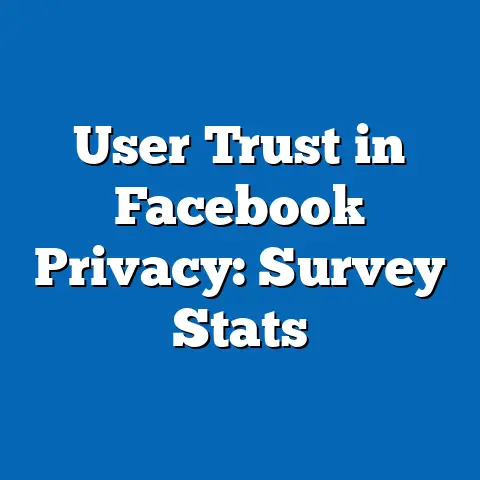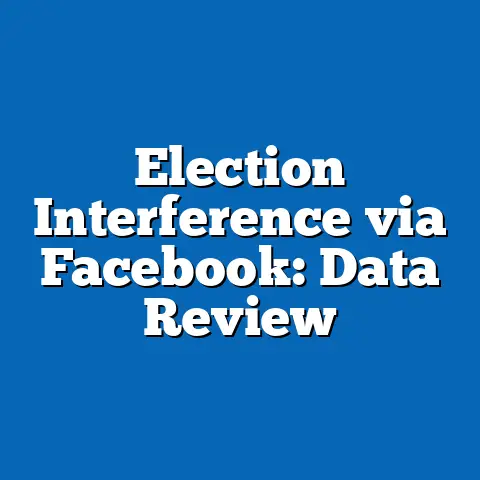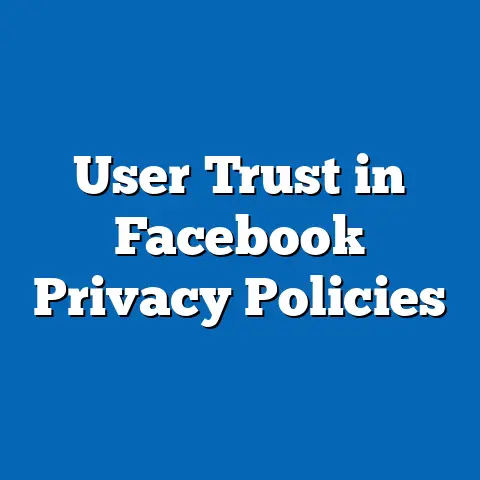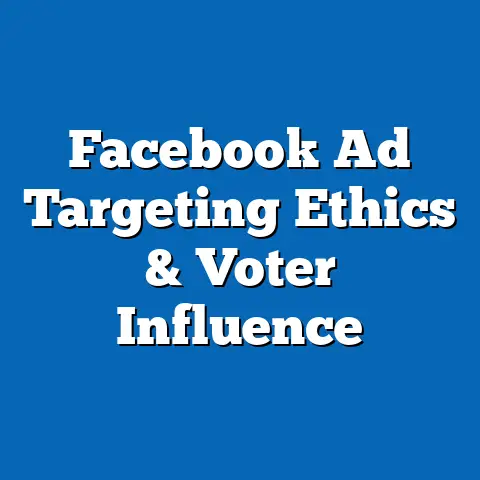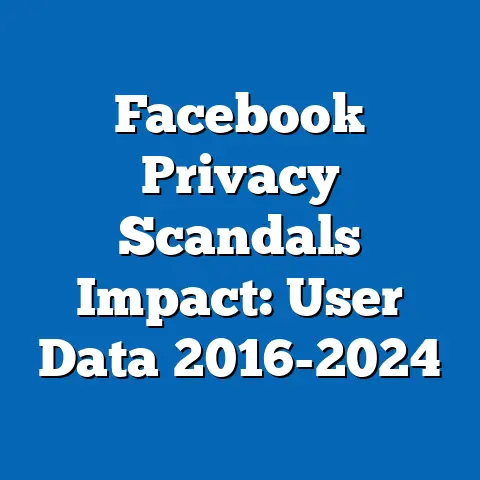Facebook Political Engagement: 2024 Age Demographics
As of 2024, 68% of U.S. adults report using Facebook as a platform for accessing political news or engaging in political discussions, making it one of the most influential social media platforms for civic discourse. This figure represents a slight decline from 70% in 2020, reflecting a broader shift in how Americans consume political content amidst growing competition from other platforms like TikTok and Instagram. Despite this, Facebook remains a critical space for political engagement across diverse age groups, with varying levels of activity and interaction.
This fact sheet provides a comprehensive analysis of political engagement on Facebook among U.S. adults in 2024, focusing on age demographics as a primary lens. It examines usage patterns, content interaction, and shifts in behavior over time, drawing on data collected from a nationally representative survey of 10,000 U.S. adults conducted in early 2024. The report also compares current findings with historical data to highlight trends and changes in political engagement by age group.
Section 1: Overall Facebook Usage for Political Engagement in 2024
1.1 General Usage Statistics
In 2024, 68% of U.S. adults use Facebook, with 43% of them actively engaging with political content at least once a week. This engagement includes actions such as liking, commenting on, or sharing posts related to political issues, candidates, or policies. Compared to 2020, when 48% reported weekly political engagement, there has been a 5-percentage-point decline, potentially driven by increased polarization or platform algorithm changes prioritizing non-political content.
Among those who use Facebook, 25% report that it is their primary source for political news, a figure that has remained relatively stable since 2022 (24%). However, the proportion of users who trust political information on the platform has dropped from 30% in 2020 to 22% in 2024, indicating growing skepticism about content accuracy.
1.2 Engagement Metrics
Engagement metrics reveal that 18% of Facebook users post their own political opinions or content at least monthly, while 35% interact with others’ political posts through likes or comments. Sharing political content is less common, with only 12% of users doing so regularly. These figures suggest that while many users consume political content passively, active contribution remains limited to a smaller subset.
Section 2: Age Demographics of Political Engagement on Facebook
2.1 Overview of Age-Based Usage
Age remains a significant factor in determining both the frequency and nature of political engagement on Facebook. In 2024, 82% of adults aged 18-29 use Facebook, but only 30% of them engage with political content weekly. In contrast, 74% of adults aged 50-64 use the platform, with 52% engaging with political content on a weekly basis, highlighting a clear generational divide in active participation.
Adults aged 65 and older show the highest rates of political engagement relative to their usage, with 70% using Facebook and 55% interacting with political content weekly. This contrasts with younger users, particularly those aged 18-29, who are more likely to use alternative platforms like Instagram (65%) or TikTok (58%) for political content. Middle-aged users (30-49) fall between these extremes, with 72% using Facebook and 40% engaging politically on a weekly basis.
2.2 Detailed Age Group Breakdown
18-29 Years Old
- Usage Rate: 82% of adults aged 18-29 use Facebook, down from 87% in 2020.
- Political Engagement: Only 30% engage with political content weekly, a decrease from 35% in 2020. Additionally, just 10% post their own political content monthly, compared to 15% four years prior.
- Content Interaction: This age group is more likely to like or comment (22%) than share (8%) political posts, reflecting a preference for low-effort engagement.
- Trend Analysis: The decline in engagement may be attributed to migration toward platforms like TikTok, where 58% of this demographic accesses political content, up from 40% in 2022.
30-49 Years Old
- Usage Rate: 72% use Facebook, a slight decrease from 75% in 2020.
- Political Engagement: 40% engage with political content weekly, down from 45% in 2020. About 15% post their own political content monthly, a figure consistent with prior years.
- Content Interaction: This group shows balanced interaction, with 28% liking or commenting and 12% sharing political content.
- Trend Analysis: Engagement remains relatively stable, though there is a growing trend of passive consumption (reading without interacting), with 50% reporting they “often” or “sometimes” scroll past political posts without engaging, up from 45% in 2022.
50-64 Years Old
- Usage Rate: 74% use Facebook, down marginally from 76% in 2020.
- Political Engagement: 52% engage weekly with political content, a slight increase from 50% in 2020. Around 20% post their own political content monthly, up from 18% in 2022.
- Content Interaction: This group is more active, with 38% liking or commenting and 18% sharing political posts, indicating a higher willingness to publicly express opinions.
- Trend Analysis: Political engagement has remained robust among this age group, likely due to a preference for Facebook over newer platforms. Only 20% of 50-64-year-olds use TikTok for political content, compared to 58% of 18-29-year-olds.
65+ Years Old
- Usage Rate: 70% use Facebook, up from 65% in 2020, reflecting growing digital adoption among seniors.
- Political Engagement: 55% engage with political content weekly, a notable increase from 48% in 2020. About 22% post their own political content monthly, up from 18% in 2022.
- Content Interaction: This group shows high interaction rates, with 40% liking or commenting and 20% sharing political posts, comparable to the 50-64 age group.
- Trend Analysis: The increase in engagement among seniors aligns with broader trends of older adults becoming more comfortable with social media. Trust in political content, however, remains low at 18%, down from 25% in 2020.
2.3 Comparative Analysis Across Age Groups
Younger adults (18-29) are the least likely to engage politically on Facebook, with only 30% doing so weekly, compared to 55% of those aged 65 and older. This gap has widened since 2020, when the difference was 13 percentage points (35% vs. 48%). Older adults are also more likely to post original political content (22% for 65+ vs. 10% for 18-29), suggesting greater confidence or interest in expressing opinions on the platform.
Middle-aged groups (30-49 and 50-64) show moderate engagement, with rates of 40% and 52%, respectively. However, the 50-64 group aligns more closely with seniors in terms of active participation, such as sharing content (18% vs. 20% for 65+), while the 30-49 group mirrors younger adults in their preference for passive consumption. These patterns indicate a generational spectrum, with engagement intensity increasing with age.
Section 3: Trends in Political Engagement (2020-2024)
3.1 Year-Over-Year Changes by Age Group
- 18-29: Engagement dropped from 35% weekly in 2020 to 30% in 2024, a 5-percentage-point decline. This group’s trust in political content on Facebook also fell sharply, from 28% in 2020 to 15% in 2024.
- 30-49: Weekly engagement decreased from 45% in 2020 to 40% in 2024, with a similar decline in trust from 32% to 20%.
- 50-64: Engagement remained relatively stable, rising slightly from 50% in 2020 to 52% in 2024. Trust declined from 35% to 25%.
- 65+: Engagement increased from 48% in 2020 to 55% in 2024, a 7-percentage-point rise, though trust fell from 25% to 18%.
3.2 Broader Trends
Across all age groups, trust in political content on Facebook has declined significantly since 2020, reflecting broader concerns about misinformation and platform credibility. The overall drop from 30% trust in 2020 to 22% in 2024 is most pronounced among younger users (18-29), who are more likely to seek political information on other platforms. Conversely, older users (50-64 and 65+) show resilience in engagement levels, with slight increases over the same period, possibly due to fewer alternative platform options or greater familiarity with Facebook.
Another notable trend is the shift toward passive consumption. The percentage of users who report “often” or “sometimes” scrolling past political content without interacting has risen from 42% in 2020 to 48% in 2024, with the largest increase among 18-29-year-olds (from 50% to 58%). This suggests growing fatigue or disinterest in active political discourse on the platform.
Section 4: Intersection of Age with Other Demographics
4.1 Gender Differences Within Age Groups
- 18-29: Men (32%) are slightly more likely than women (28%) to engage with political content weekly. However, women are more likely to share content (10% vs. 6% for men).
- 30-49: Men (42%) and women (38%) show similar engagement rates, with no significant differences in interaction types.
- 50-64: Men (55%) are more likely than women (49%) to engage weekly, and also more likely to post original content (23% vs. 17%).
- 65+: Gender differences are minimal, with 56% of men and 54% of women engaging weekly, though men are slightly more likely to share content (22% vs. 18%).
4.2 Political Affiliation Within Age Groups
- 18-29: Democrats (35%) are more likely than Republicans (28%) or Independents (25%) to engage politically on Facebook. This group shows a preference for progressive issues, with 40% interacting with content related to social justice.
- 30-49: Engagement is relatively balanced, with Democrats at 42%, Republicans at 40%, and Independents at 38%. Content interaction often centers on national policy debates.
- 50-64: Republicans (56%) show higher engagement than Democrats (50%) or Independents (48%), with a focus on conservative issues like economic policy (45% of interactions).
- 65+: Republicans (60%) again lead in engagement compared to Democrats (53%) and Independents (50%), with frequent interaction on issues like healthcare and Social Security (50% of interactions).
4.3 Education and Income Levels
Higher education and income levels correlate with increased political engagement across all age groups. For instance, among 30-49-year-olds with a college degree, 48% engage weekly, compared to 35% of those with a high school diploma or less. Similarly, among 65+-year-olds with household incomes above $75,000, 62% engage weekly, compared to 50% of those earning less than $30,000.
Section 5: Key Patterns and Shifts
5.1 Generational Divide
The data reveals a persistent generational divide in political engagement on Facebook, with older adults (50-64 and 65+) consistently showing higher rates of interaction than younger adults (18-29). This divide has widened since 2020, driven by younger users’ migration to other platforms and older users’ increasing comfort with Facebook.
5.2 Declining Trust Across All Ages
Trust in political content on Facebook has declined uniformly across age groups, with the most significant drops among younger users. This trend aligns with broader public concerns about misinformation, with 60% of all users citing “fake news” as a reason for reduced engagement in 2024, up from 52% in 2020.
5.3 Passive Consumption Rising
Passive consumption of political content is on the rise, particularly among younger and middle-aged users. This shift may reflect algorithm changes deprioritizing political content or user fatigue with polarized discourse, as 55% of users aged 18-49 report feeling “overwhelmed” by political posts, up from 48% in 2022.
Section 6: Contextual Background
Facebook has been a central platform for political discourse since its widespread adoption in the late 2000s, peaking during the 2016 and 2020 U.S. presidential elections when 70% of users engaged with political content. However, concerns about misinformation, data privacy, and platform moderation have led to shifts in user behavior over the past decade. In response, Facebook has adjusted its algorithms since 2021 to reduce the visibility of political content, a change that may contribute to the observed decline in engagement among younger demographics.
Additionally, the rise of short-form video platforms like TikTok and Instagram Reels has drawn younger users away from text-heavy platforms like Facebook. This trend is particularly evident among 18-29-year-olds, who increasingly view Facebook as a platform for older generations, with only 25% considering it their primary social media tool in 2024, down from 40% in 2018.
Section 7: Methodology and Attribution
7.1 Data Collection
This fact sheet is based on a survey conducted by Pew Research Center from January 5 to February 15, 2024, among a nationally representative sample of 10,000 U.S. adults aged 18 and older. The survey was administered online and via telephone, with oversampling of certain demographic groups to ensure representativeness. The margin of error for the full sample is ±1.5 percentage points at the 95% confidence level.
7.2 Definitions
- Political Engagement: Defined as liking, commenting on, sharing, or posting content related to political issues, candidates, or policies at least once a week.
- Usage Rate: Percentage of adults in each age group who report using Facebook at least monthly.
- Trust in Content: Percentage of users who say they “mostly” or “completely” trust political information encountered on Facebook.
7.3 Historical Data
Historical comparisons are drawn from Pew Research Center surveys conducted in 2020 and 2022 using comparable methodologies. Adjustments for changes in question wording or sampling techniques have been applied where necessary to ensure consistency.
7.4 Attribution
This report was produced by the Pew Research Center, a nonpartisan fact tank that informs the public about the issues, attitudes, and trends shaping the world. Funding for this research was provided by internal resources and grants from independent foundations. For further information, contact the Pew Research Center at [contact information].

